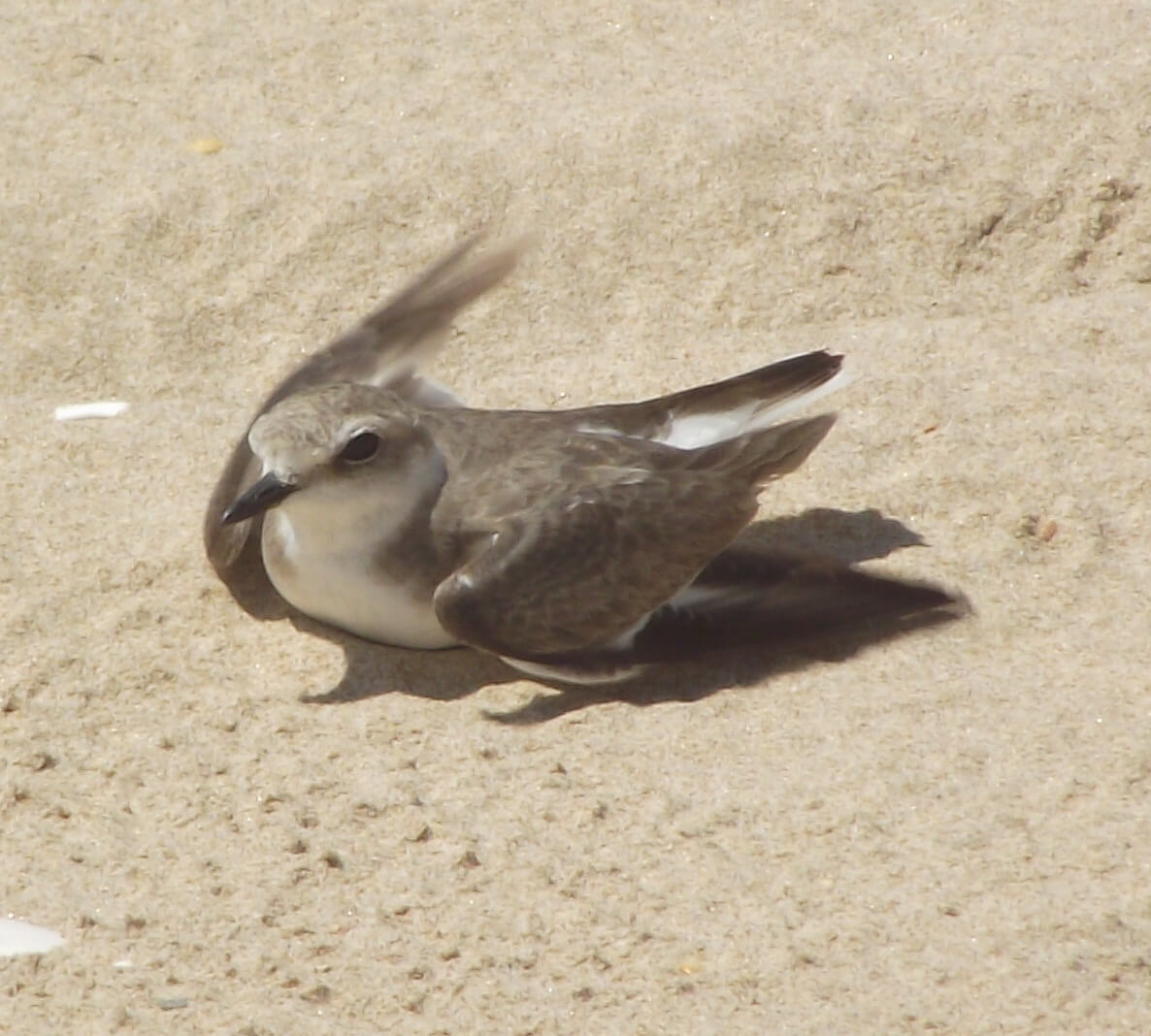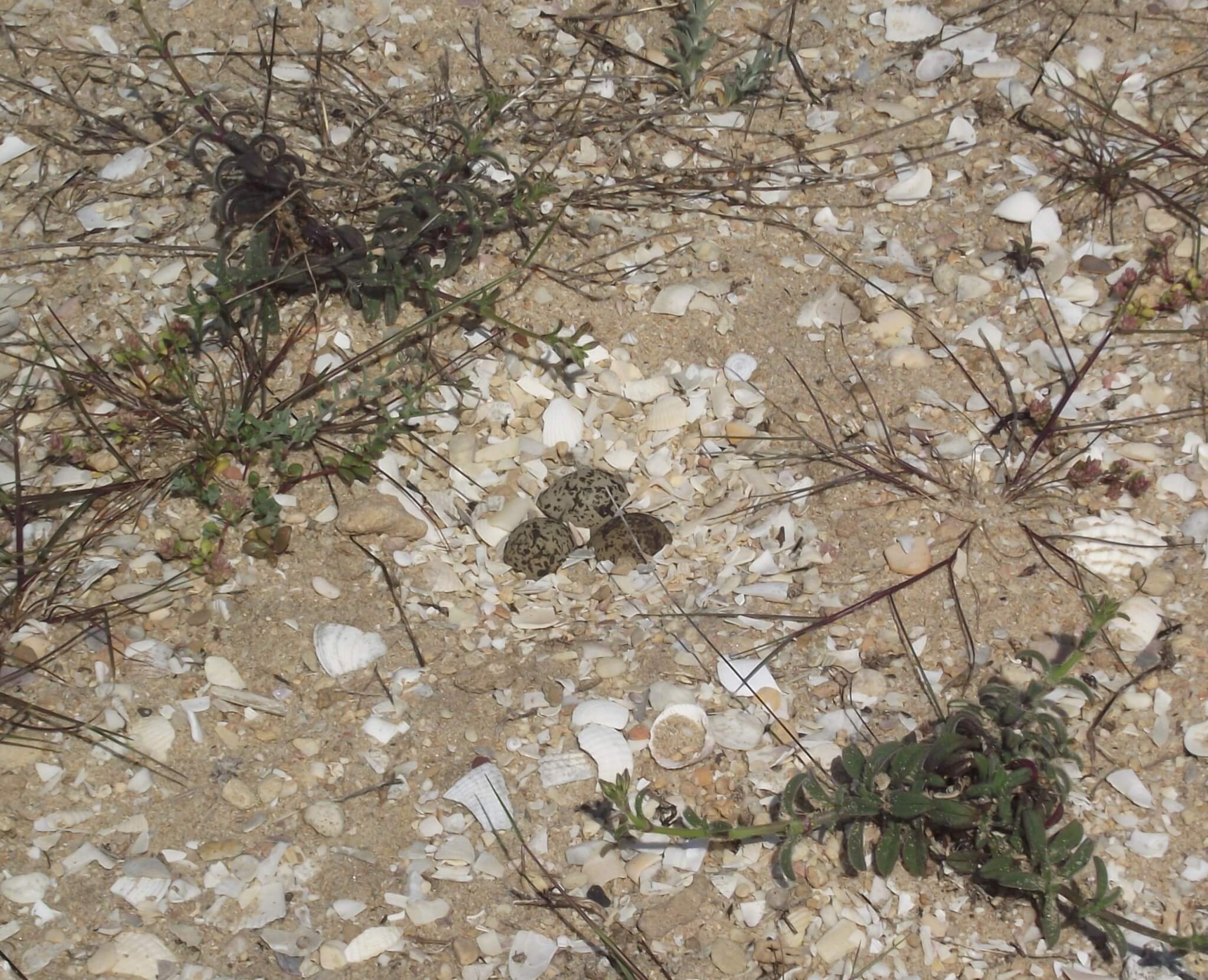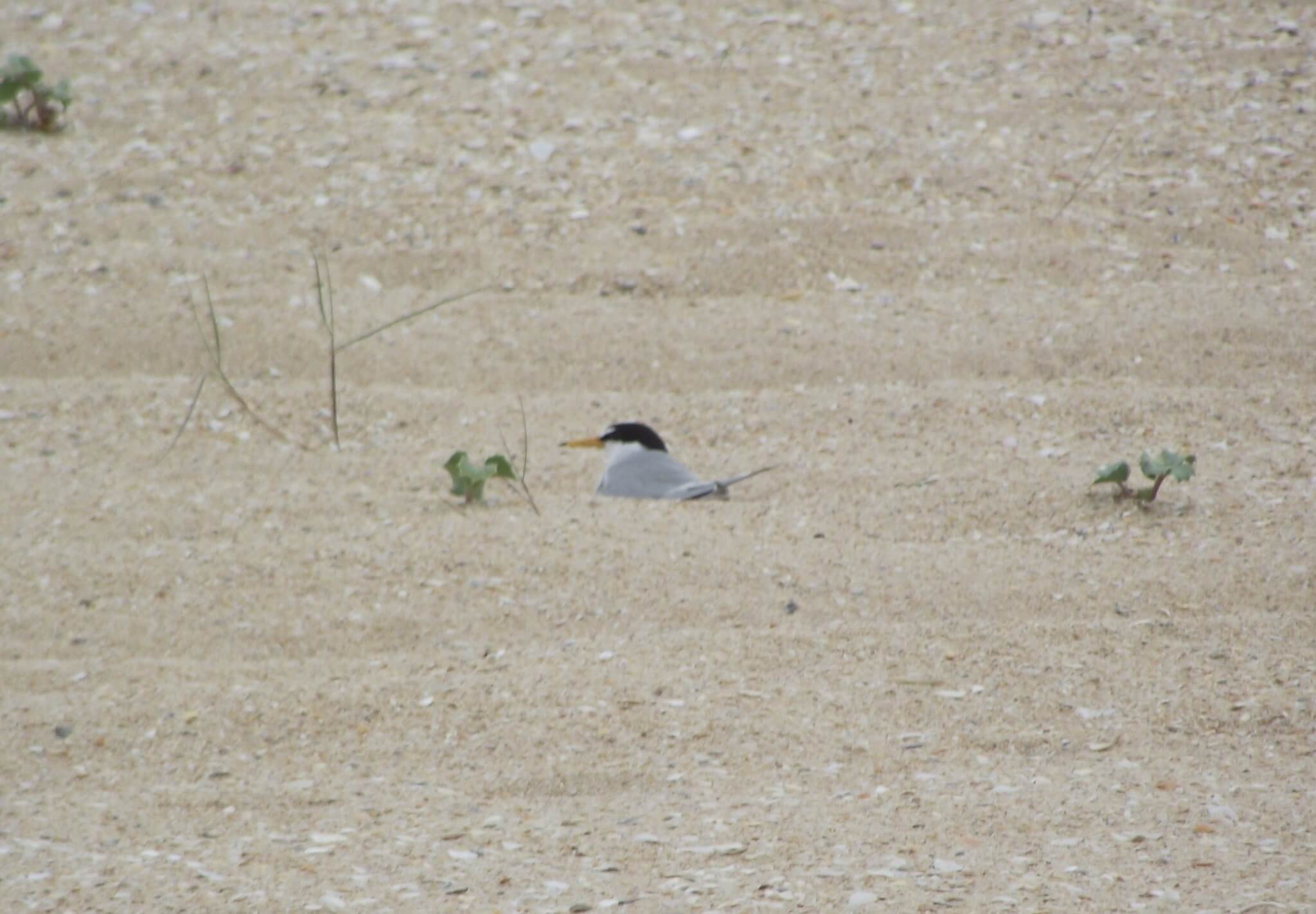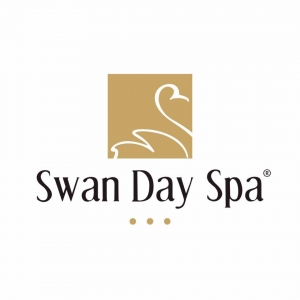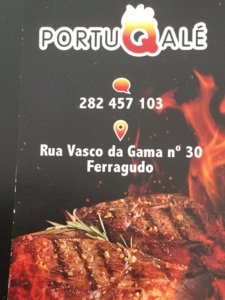Newsletter September 2021
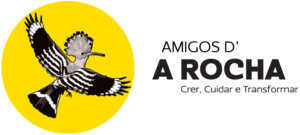
Welcome to our September Newsletter 2021
 Thank you for supporting us!
Thank you for supporting us!
End of summer means bird migration! Be aware!
Helen & Filipa
S
N
A
P
SHOT

D. Afonso Henriques

First King of Portugal
(1143-1185)
Born: 1109 (uncertain)
Died: 6th December 1185, Coimbra, Portugal
Afonso Henriques was the first King of Portugal, probably born in Guimarães on the 5th of August 1109 (not known for sure); son of Henrique de Borgonha and Teresa de Leão, was grandson of the Castilian King, Afonso IV of Leão and Castela. His father was made Count of Portucalense County by King Afonso VI as a rewarded due to his success in the battles against the Moors in the Iberian Peninsula. After his father died, D. Afonso Henriques, was against his mother politics and defeated her on a Saint Mamede battle (1128), becoming the governor of the County and got political independence from Galicia.
The main aim of D. Afonso Henriques was to make the Portucalense County independent, recognized as a Kingdom and to conquer new lands from the Moors. In 1139 after winning the Ourique battle against the Moors, he proclaimed himself King of Portugal, but the independence of the new County was only recognized in 1143 with the Zamora agreement between D. Afonso Henriques and Afonso VII, his cousin, King of Leão and Castela. Although only in 1179, the Pope Alexander III, officially granted the Portuguese independence and recognized it as a kingdom. During his reign he conquered most parts of the territory from the Moors, including Lisbon and Alcácer do Sal.
In 1146, D. Afonso Henriques got married to D. Mafalda de Sabóia, they had 7 children, including D. Sancho I, future king of Portugal. In 1169, after being hurt during a battle, a regency council was created to reign in the name of the disabled King; this council was made up of two of his children: D. Sancho and D. Teresa. King D. Afonso Henriques died on the 6th of December 1185 in Coimbra of unknown causes.
IFO’s – Identified Flying Objects…
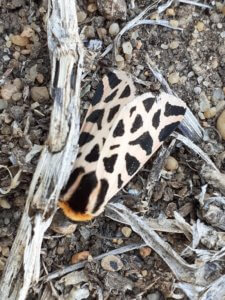
Discrete Chaperon
(Cymbalophora pudica, Esper, 1784)
Photo by Filipa Bragança

Morphology: It is a macro moth from the Erebidae Family, with a wingspan between 35 and 42 mm. The forewings have creamy ground colour with large dark spots triangle shaped (the pattern resembles a mosaic); the hind wings are whitish with dark spots around the edges; the head is black and the body reddish. The adults fly from August to October.
Habitat: grasslands, scrublands, and rocky hillsides.
Distribution: North Africa and Southern Europe, from Iberia Peninsula to Greece.
Notes: The larvae host plants are grasses from the Poaceae Family (Taraxacum sp and Plantago sp). The caterpillars are active form May to June, they rest in the cocoon during the summer months.
Tweet… Tweet…


Eurasian Collared Dove
(Streptopelia decaocto, Frivaldszky, 1838)
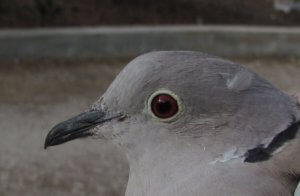
Photos by Filipa Bragança
Identification: It is a dove from the Columbidae Family, between 29 to 33 cm in length and a wingspan between 48 and 53 cm. The plumage is plain pale brown grey with a narrow black collar around neck side, the tail is long, and the tail feathers have a broad white band. The wing flight feathers are dark grey. Similar to Turtle Dove (Streptopelia turtur) but larger, paler and produces different sounds.
Habitat and Ecology: Occurs in urban areas in gardens, parks, farmlands, and pine tree forest, needs dense trees for nesting. Can have 2 or 3 broods per year. Sings all year round, but more intensely between March and September. This species feeds mainly on vegetable matter, grains, seeds, green parts of plants, also invertebrates and bread.
Distribution: Wide distribution, Southern Asia, Northern Africa. Was introduced in USA and Mexico. It is a resident bird. In Portugal it is present all over the country but is more common along the coast and very common in the Algarve.
Threats and Notes: Least Concern (LC) in the International Union for Conservation of Nature (IUCN). It is considered a strongly dispersive species; established in Spain in 1960 and arrived in Portugal in 1974. The Algarve was one of the last regions to be colonized, in Ria de Alvor the species was observed for the first time in 1991 and today is very common.
DID YOU KNOW? 
- On the 18th of September A Rocha will take part on the international Coastal Cleaning Day. The meeting point will be at the car park, near the swimming pool in Alvor, at 9h20. Fore more information contact: Isabel.soares@rocha.org
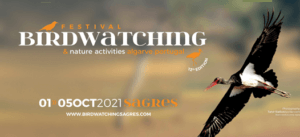
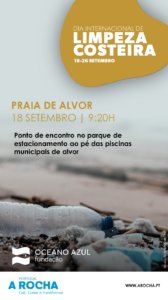
- The Sagres Birdwatching Festival is coming. A Rocha Portugal will take part with Moths Monitoring and Birdwatching tours. The program and bookings are already available here
- A Rocha Portugal will be this month in Fontes de Estômbar, developing some activities together with Lagoa Council. Subscriptions will be available soon.
13th September – Moths; 14th September – Bird ringing; 16th September- Birdwatching
- August was a calm month for birds at our ringing station, although we captured some wonderful birds: : Golden Oriole (Oriolus oriolus), European Kingfisher (Alcedo athis), Woodchat Shrike (Lanius senator), Melodious Warbler (Hippolais polyglota), Common Chiffchaff (Phylloscopus collybita), Sardinian Warbler (Sylvia atricapilla), Red-necked Nightjar (Caprimulgus ruficollis) and Whitethroat (Sylvia communis).
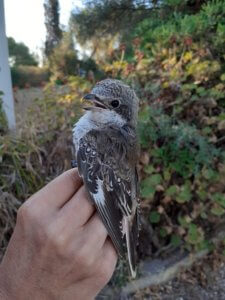
Juvenile Woodchat Shrike
(Lanius senator)
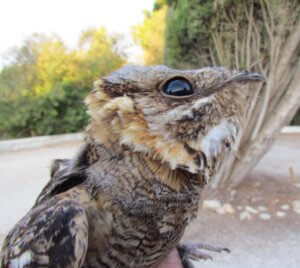
Red-necked Nightjar
(Caprimulgus rufucolis)

European Kingfisher
(Alcedo athis)
- At Ria de Alvor, Nature 2000, the number and diversity of birds will increase as our winter visitors are arriving. Some of the birds seen: Flamingo (Phoenicopterus roseus) (around 150 individuals), White Stork (Ciconia ciconia) (more than 200 individuals), Audouin’s Gull (Larus audouinii) (more than 100 individuals), Glossy Ibis (Plegadis falcinellus), Spoonbill (Platalea leucorodia), Little Tern (Sternula albifrons), Osprey (Pandion haliaetus), Yellow Wagtail (Motacilla flava), Whimbrel (Numenius phaeopus), Grey Plover (Pluvialis squatarola), Dunlin (Calidris alpina) and Curlew Sandpiper (Calidris ferruginea).


Summer, is a wonderful time to go to the beach! People do their sunbathing or walk up and down and do not realize how the beach is full of life. Close to the dunes, there is some movement… Sometimes it is hard to see wildlife because their colour is an excellent camouflage. A couple of Kentish Plovers (Charadrius alexandrinus) chose this place to make their nest; a small hole in the sand lined with small pieces of shell, it is almost invisible! If you get close to it, the birds start running on the sand calling for your attention away from the nest, birds are amazing! Sometimes they even pretend they are injured; they think we are predators and so pretend to be easy prey. But as soon as you got to close to them, they just fly away! Further away, it is hard not to notice them, a small colony of Little Tern (Sternula albifrons), their strategy is totally different! As you pass by all the birds are flying around making this amazing noise and flying in your direction almost “attacking” you! These are elegant birds; it is possible to see them flying along the shore and diving for “fish”. Deep inside the dunes, there is another sound, moving between the vegetation, the Crested Larks (Gallerida cristata), hunting insects to feed their chicks! What a lovely beach day 😊
Filipa
Female Kentish Plover in display Nest of Kentish Plover Little Tern in nest
 INVASIVE SPECIES
INVASIVE SPECIES
Wels catfish (Silurus glanis, Linnaeus, 1758)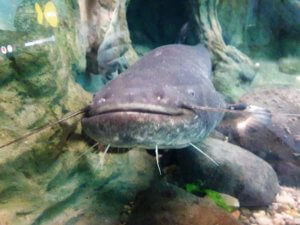
Phylum: Chordata
Class: Actinopterygii
Family: Siluridae
Origin: Eastern Europe and Western Asia
Size: 1 to 1,5 metres and 15 to 20 kg (up to 3 metres and 150 kg)
The Wels Catfish or Sheatfish is the 3rd biggest freshwater fish in the world! The main characteristic is the presence of 2 long barbels on the upper jaw and 4 short barbels on the lower jaw; the body is elongated; it has a long anal fin extending to the caudal fin. The colour can vary a lot, normally it is dark on the back and lighter underneath, the skin is very slimy. Like eels they can swim backwards. Feeds at night on the bottom of rivers, annelid worms, crustaceans, insects, molluscs, and fish, but also can eat frogs, rats, and birds, it is a top predator feeding on everything it can catch. Inhabits rivers, dams, and lakes with deep waters, sometimes also occurs in brackish water. The females lay the eggs in shallow waters, around 30,000 per kg of body weight, and the males guard the eggs until they hatch.
The native range of the Wels Catfish extends from Germany to eastern Europe, including Poland and southern Sweden, northern Iran and southern Turkey to the Baltic States and Russia and to the Aral Sea. This species is now established in several countries to the west and south of its native range: Bosnia-Herzegovina, Spain, Portugal, Denmark, Tunisia, Italy, Syria, Croatia, Turkey, UK, France, The Netherlands, and China. The routes of introduction are mainly recreational angling, aquaculture, and biological control agent. Due to its size and quality, it is a very famous edible fish all over Europe.
The Wels Catfish was introduced illegally in Spain in 1974 in the Ebro River; in 1998 some fisherman introduced illegally in Tagus River in Spain; in 2006 the species was observed for the first time in Portugal but only in 2014 its presence was confirmed. Nowadays it is present along Tagus River and dams along the river and already have been seen in Douro River. In the last years, the population has been increasing. This species is a top predator and negatively affects the biodiversity of the rivers as well as the economic activities.
Portugal and Spain have a project together named Life Invasaqua which aims to stop the invasive species in rivers and lakes in both countries.
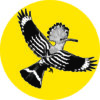 Bird Tours with A Rocha Life Special offer for Friends
Bird Tours with A Rocha Life Special offer for Friends
Laid-back birding 12th to 19th of September
Laid-back birding 12th to 19th of September
Full week of birdwatching: 20% discount
Day Tours: 15% discount.
Program (with full prices)
Sunday 12h– Ria de Alvor Marsh, half day afternoon) – 23.8 € now 20 €
Monday (13th – Sagres, full day – 59.5 € now 50.50 €
Tuesday (14th September) – Monchique, full day – 50.6 € now 43 €
Wednesday (15th September) – Alvor Dunes, half day (afternoon) – 29 € now 24.6 €
Thursday (16th September) – Salgados Lagoon, half day (afternoon) – 36.1€ now 30.6 €
Friday (17th September) – Castro Verde, full day – 129.2 € now 110 €
Saturday (18th September) – Silves, half day (morning until after lunch) – 55.1 € Now 46.8 €
Sunday (19th September) – Ria Formosa – 57.1 € now 48.5 €
For attending all the days 440 € now (with 20% discount)- 352 €
Meals are not included on any days, some trips will require you take your own picnic
For more information check the website here,
or contact by email: gui@arochalife.com, WhatsApp: 00 351 96 158 960 2, phone: 00 351 282 968 380
POPPED UP
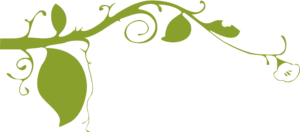
Family: Ericaceae
Identification: It is evergreen shrub, up to 100 cm height. The stems are highly branched, and the leaves are small, simple, oval, opposed and scale-like. The flowers are pinkish, small, campanulate and abundant, growing on the apex of the stems. Flowers at the end of summer, from July to November.
Habitat and distribution: Scrublands, open areas in pine forests, cork oak forests, dunes, and woodlands, grows in sandy and poor soils. Found in Europe and Northeast Africa.
Notes: The plant is an indicator of acid soils. Grows easily after a fire. The Common Heather is very import for the Honeybees because it flowers late summer when there are not many flowers available.

Common Heather
(Calluna vulgaris) (L.) Hull

Photo by Flora on
DATES TO REMEMBER

2nd, 9th, 16th, 23rd and 30th September – Cruzinha Bird ringing display & Moth Talk (10 to 12 am). requires a pre booking. Book here
13th September – Moth trapping at Sítio das Fontes, Estômbar
14th September – Bird ringing at Sítio das Fontes, Estômbar
16th September – Bird watching at Sítio das Fontes, Estômbar
18th September – International coastal cleaning day. Beach cleaning Alvor, 09:00am, meeting point at the car park next to Alvor swimming pool. For more information email: isabel.soares@arocha.org
22nd September – Autumn equinox. Beginning of Autumn.
Sagres Bird watching Festival from 1st to 5th October. More information here
Thank you for supporting the Friends of A Rocha Portugal

Dr Roy Rodrigues
Av. Do Brasil, Qta das Palmeiras, Lt P2, R/c A, 8500-299 Portimão
(+351) 282180683
royaldente@gmail.com

Sítio da Amoreira, Lote 12,
Alvor, 8500-045 Portimão
(+351) 282412562/ 925433047
www.transfair.com.pt
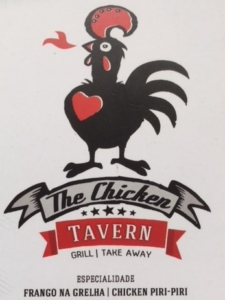
Urbanização Mar e Serra n° 47, Alvor
8500 – 783 Portimão
(+351) 911597735
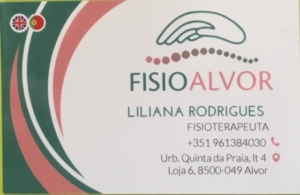
Physiotherapy, Massages (relaxation, sports, therapeutic)
Other therapies
Beauty (manicure, pedicure, hair removal, facials)
Open Monday to Friday
Thought of the month 
“We live on a very raw individualism. People are led to believe that the most important thing is the promotion of physical comfort and appearance. There is a depreciation of emotional and ethical comfort. There is the wrong idea that we can be happy by ourselves, or even worse, against the others. “ – José Luís Peixoto (1974, Portuguese poet, dramatist and novelist, Winner of the Saramago Literature Prize in 2001)

LETS BE GREEN – LETS BE GREEN – LETS BE GREEN 
Let’s be green
Sun cream, one of the worst polluters of the ocean!
- The chemicals in the composition of the most part of sun- creams, contaminate the water and harm the marine ecosystems!
- Annually, 14 thousand tons of sun-cream end up in the oceans!
- Sun creams have more than 20 chemicals in their composition, one of them is oxybenzone (causes cellular damage and hormonal imbalance)
- The toxic chemicals of sun- creams causes virus infections which affects the coral reefs (bleaching)
- Choose sun creams without oxybenzone and other similar chemicals (read carefully the ingredients)

- Choose sun creams with the stamp “Ocean conservancy”
LETS BE GREEN – LETS BE GREEN – LETS BE GREEN
Red list of the terrestrial invertebrates
In March 2019 in Portugal the field work for the red list of the terrestrial and freshwater invertebrates started. The field work was done in 61 places of Community Importance, Nature 2000 Sites. This project took place for the first time in Portugal and aims to do a systematic inventory of insects. Portugal is very rich in insect diversity and it is estimated that there are around 30, 000 species, although the diversity in some parts of the country is unknown.
The field work was done by 4 researchers, using specific sampling techniques according to the target species. This project is important to obtain up to date information about the distribution, biology and ecology of insect fauna and their risk of extinction, especially the 11 species listed in the Habitat Directive and protected in national territory.
The project started in June 2018 and is funded by PO SEUR (Sustainability Operational Program and Efficiency of Resources Uses) and by Environmental Funding.
The Red Lists are important for biodiversity Conservation and important tools for environmental conservation management because they are based on scientific knowledge.
All the information about the project is available on the website of the Red List of Terrestrial Invertebrates here (only available in Portuguese).
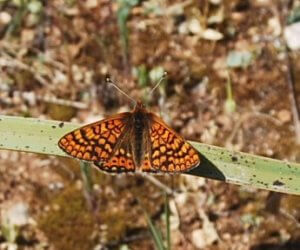 Marsh Fritillary (Euphydryas aurinia) – Annex II (species of communitarian interest which need the designation of special conservation areas)
Marsh Fritillary (Euphydryas aurinia) – Annex II (species of communitarian interest which need the designation of special conservation areas)
Photo by Filipa Bragança
Sustainability Champions 
Sustainability Champions from around the World– Looking at ways to curb pollution and waste management.
We would like to thank Daniel Hartz, the founder of Sustainability Champions for giving us the permission to share this information.
Sandra Pascoe Ortiz is a chemical engineer at the University of the Valley of Atemajac in Zapopan, Mexico, where she has developed a plastic made from cactus juice.
 This plastic alternative takes around 2-3 months to break down in soil and even less time if soaked in water or put in compost it takes about 7 days. It’s also non-toxic and edible, which may help mitigate some of the hazards for sea creatures since so much of our plastic ends up in the ocean.
This plastic alternative takes around 2-3 months to break down in soil and even less time if soaked in water or put in compost it takes about 7 days. It’s also non-toxic and edible, which may help mitigate some of the hazards for sea creatures since so much of our plastic ends up in the ocean.
It currently takes Professor Ortiz and her team about 10 days to brew up a new batch of the eco-friendly plastic, but she believes the process can be sped up with the help of industrial production.

Turtle-dove hunting suspended this summer
The Portuguese Society for the Study of Birds (SPEA) applauds the temporary ban on turtle-dove hunting recently announced by the Ministry of Environment and Climate Action as a protection measure for the species. The decision banned Turtle-dove hunting in the 2021-2022 season, in an attempt to enable the recovery of this species whose populations in Europe have suffered an 80% decline in the past 40 years, and which also shows evidence of steep decline in Portugal since the beginning of the 90’s. 
This temporary ban is the result of years of joint work and discussion between environmental organizations, authorities and hunters’ associations, both in Portugal and internationally. Read more here
Photo by Alberto Garcia

Check the website for dates for organised tours
Woodpeckers at Ria de Alvor- part 1
Three species of woodpeckers can be found in Portugal and all 3 can be found in the Ria de Alvor and our centre, Cruzinha.
The Iberian Green Woodpecker (Picus sharpei) is an endemic species present in Iberia and the Pyrenees, including the northern part on the French side (this means it is found nowhere else in the world besides these areas). The adults do not have a black area around the eye, the malar stripe is almost all red and the call is higher than the European Green Woodpecker (Picus viridis). Genetic studies also confirmed that the Iberian Green Woodpecker is different from the birds in the rest of Europe and from the Levaillant’s Woodpecker (Picus vaillantii) from North Africa. However, there is a contact area in the south of France where the two species can interbreed. It is the most widespread of the woodpeckers found in Iberia. In Spain and Portugal, it is a resident species present in all the country but shows a discontinuous distribution in the Alentejo. It is more abundant in the north-western part of the country, and it is present in all the Algarve. There is little difference between the winter and breeding distribution. It shows only small local and seasonal dispersive movements.  That is why there are few sightings outside of its distribution area, for instance there are only 6 sightings in Gibraltar. This also can lead to a high mortality during harsh winters. It is associated with woodland habitat (pinewood, oaks, « montado », riparian gallery, chestnut grove). It sometimes uses open farmland to feed on insects on the ground, mostly ants. In the areas affected by fires, it uses the not burnt areas to rest and preen and the burnt areas to look for food. Along the coast, it prefers pinewoods, and it is absent from the tree-less areas of the Alentejo, the Beira-Baixa and the big urban areas. In recent years, the distribution in the lower Alentejo and eastern Algarve has increased, probably linked with new pine plantations associated with the abandonment of agriculture. It breeds from sea level to 2000 m altitude. During the breeding time, it prefers mature woodlands, but it can also nest in areas without trees, where it occupies abandoned Roller or Bee-eater nest.
That is why there are few sightings outside of its distribution area, for instance there are only 6 sightings in Gibraltar. This also can lead to a high mortality during harsh winters. It is associated with woodland habitat (pinewood, oaks, « montado », riparian gallery, chestnut grove). It sometimes uses open farmland to feed on insects on the ground, mostly ants. In the areas affected by fires, it uses the not burnt areas to rest and preen and the burnt areas to look for food. Along the coast, it prefers pinewoods, and it is absent from the tree-less areas of the Alentejo, the Beira-Baixa and the big urban areas. In recent years, the distribution in the lower Alentejo and eastern Algarve has increased, probably linked with new pine plantations associated with the abandonment of agriculture. It breeds from sea level to 2000 m altitude. During the breeding time, it prefers mature woodlands, but it can also nest in areas without trees, where it occupies abandoned Roller or Bee-eater nest.
At Ria de Alvor, most of the sightings occur between March and August but it can be seen all year round. The first Iberian Green Woodpecker caught at Cruzinha was in 2007. Then, we had to wait 10 years to catch the second one, but it has been annual between 2017 and 2019 with 2 birds caught during 2 years (2018 and 2019). In total, 6 birds were caught and ringed at Cruzinha, 5 of them during the last 4 years.
By Guillaume Réthoré
If you have any queries please do not hesitate to contact us:
friends.arpt@arocha.org
Or visit us on our open day: Thursdays from 10:15 to 12:00 am
See map: https://arocha.pt/en/contact-us/
GPS coordinates
37°08’39.8″N (37.1444) 8°36’29.2″W (-8.6081)
(+351) 282 968 380
Thank you for supporting us!
Hope to see you soon!

